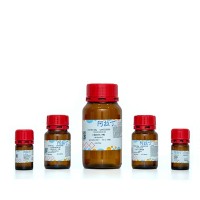Detection of Brain Pathology by Magnetic Resonance Imaging of Iron Oxide Micro-particles
互联网
545
Contrast agents are widely used with magnetic resonance imaging (MRI) to increase the contrast between regions of interest and the background signal, thus providing better quality information. Such agents can work in one of two ways, either to specifically enhance the signal that is produced or to localize in a specific cell type of tissue. Commonly used image contrast agents are typically based on gadolinium complexes or super-paramagnetic iron oxide, the latter of which is used for imaging lymph nodes. When blood-brain barrier (BBB) breakdown is a feature of central nervous system (CNS) pathology, intravenously administered contrast agent enters into the CNS and alters contrast on MR scans. However, BBB breakdown reflects downstream or end-stage pathology. The initial recruitment of leukocytes to sites of disease such as multiple sclerosis (MS), ischemic lesions, or tumours takes place across an intact, but activated, brain endothelium. Molecular imaging affords the ability to obtain a “non-invasive biopsy” to reveal the presence of brain pathology in the absence of significant structural changes. We have developed smart contrast agents that target and reversibly adhere to sites of disease and have been used to reveal activated brain endothelium when images obtained by conventional MRI look normal. Indeed, our selectively targeted micro-particles of iron oxide have revealed the early presence of cerebral malaria pathology and ongoing MS-like plaques in clinically relevant models of disease.









